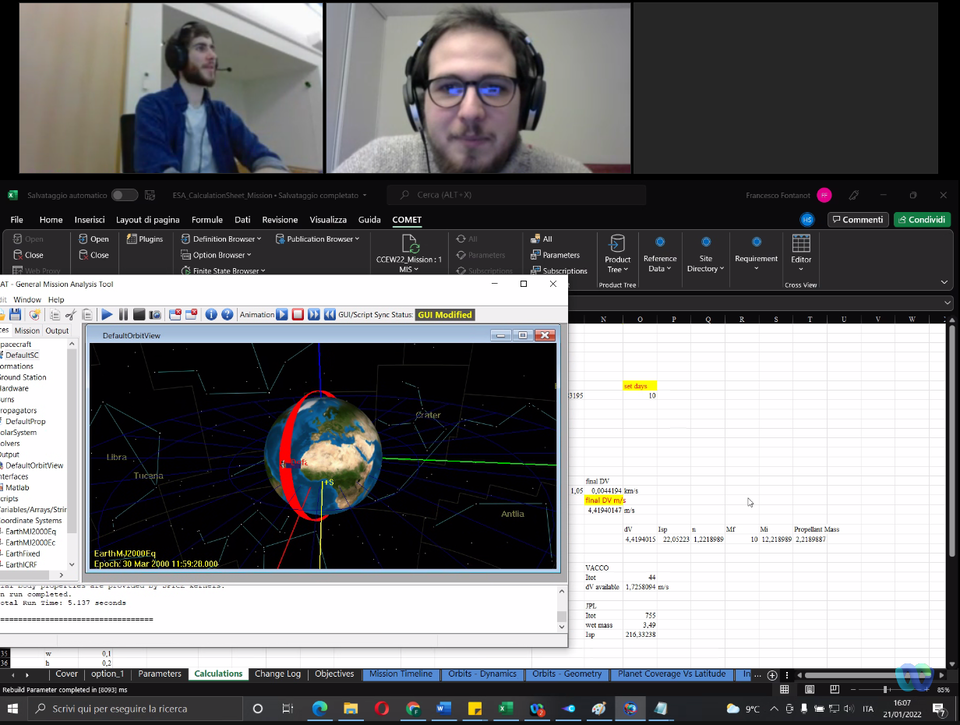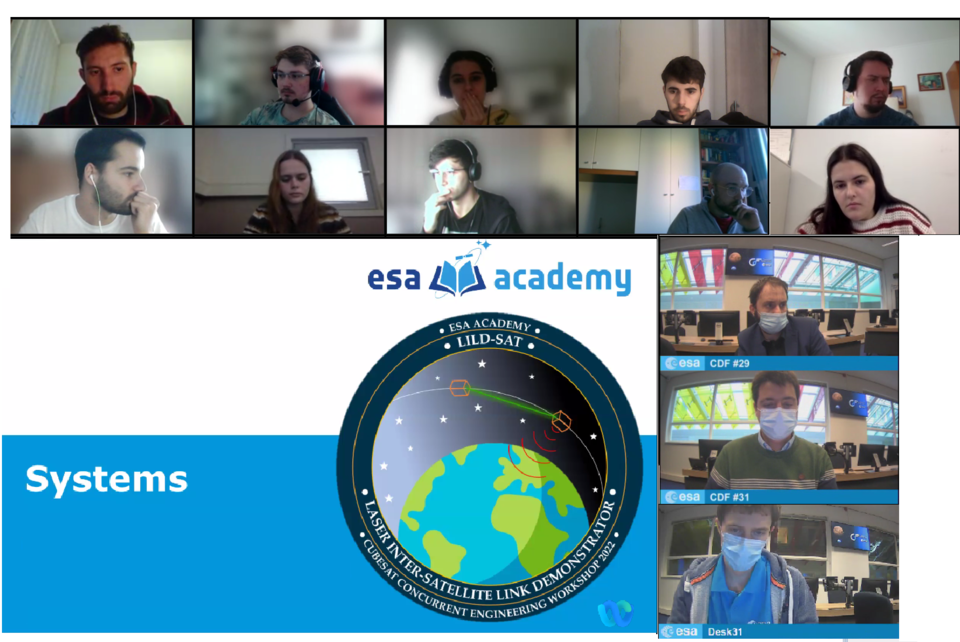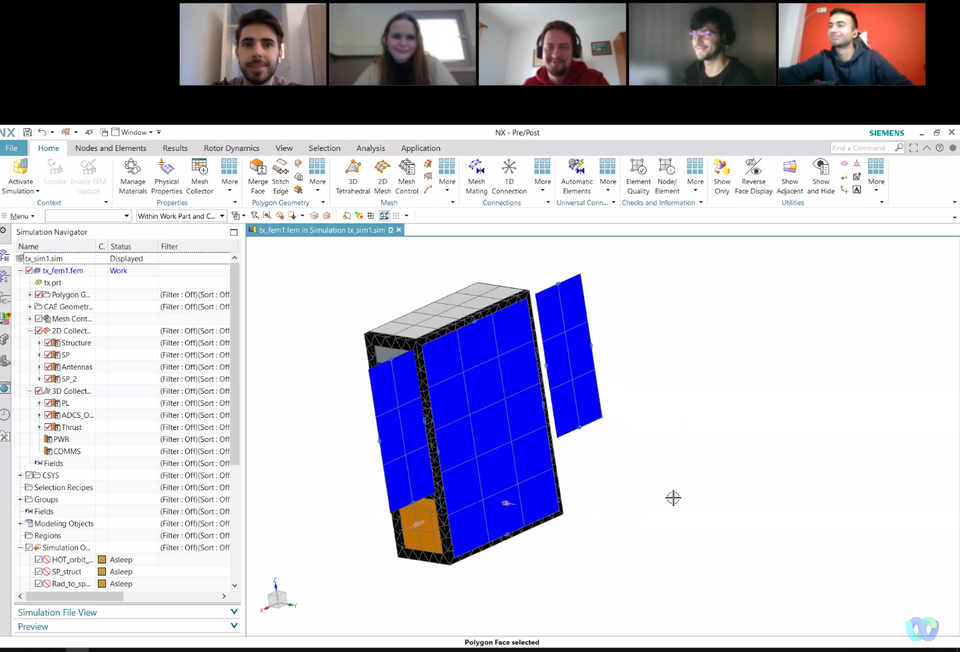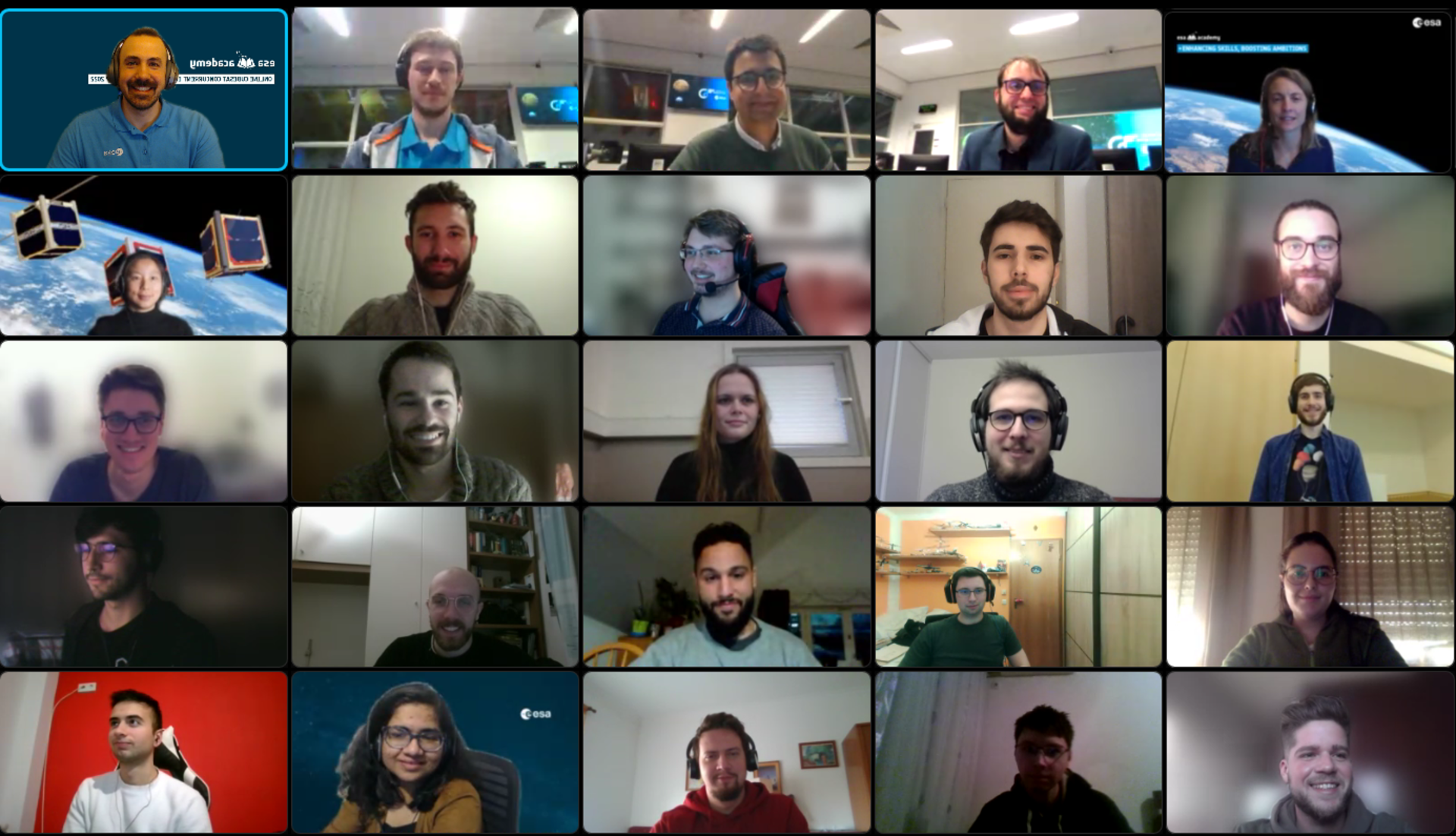Online CubeSat Concurrent Engineering Workshop 2022 tasks university students with designing a technology demonstration
In brief
ESA Academy unit and ESA’s Systems and Concurrent Engineering Section have successfully collaborated to organise and host the Online CubeSat Concurrent Engineering Workshop 2022. This is the workshop’s third edition, and the first to take place fully online due to the COVID-19 pandemic.
In-depth
Running over two weeks from 17 to 27 January 2022, in attendance were 19 university students studying for Masters and PhDs in Engineering. They represented five different ESA Member States, and seven university CubeSat teams currently in the early stages of designing their own missions.
ESA System Engineers logged in from ESA’s Concurrent Design Facility (CDF) at ESTEC in the Netherlands, and introduced the students to the Concurrent Engineering approach. Lesson topics included analysis of mission requirements, trade-offs and system modes, selection and calculation of equipment and product tree hierarchies, and teamworking skills.

The students were given an exciting challenge: use Concurrent Engineering to design a hypothetical technology demonstrator CubeSat mission to test a new laser-based inter-satellite link.The students named this mission theLaser Inter-satellite Link Demonstrator, or LILD-SAT for short. It would consist of two 6-Unit Cubesats orbiting in Low Earth Orbit.
“Despite being an online experience, the workshop is crucial to understand the very beginning of a CubeSat design more practically,” said a Portuguese student from the University of Porto. “It focussed on communicating with other subsystems, a critical aspect for CubeSat design, while also giving us a lot of knowledge and confidence.”

The first week began with students investigating the Concurrent Model-based Engineering Tool (COMET), which is used in ESA for professional CE studies. With this as a springboard, the students were then given mission requirements from which they had to derive their own system and subsystem requirements. The students focussed on six subsystems: Trajectory Analysis, Attitude and Orbit Control Subsystem (AOCS), Communications and Data Handling, Power, Configuration and Structures, and Thermal. This necessitated deep understanding of how various subsystem design parameters impact each other, sometimes in complex and unexpected ways. The ESA experts took on the role of System Engineers to support the process.
Several discussions were had, which led to necessary trade-offs, but eventually the students settled on figures for the power and mass needed for their subsystems, which led to a first iteration.

“The Online CubeSat Concurrent Engineering Workshop 2022 is a perfect mix of interesting lectures that introduce you to the core idea of Concurrent Engineering and intensive group work on the various subsystems,” explained a German Student from Technische Universität Darmstadt. “I especially enjoyed the team plenary sessions at the end of the day, where you could see our satellite gradually taking shape.”
Work during this first week was punctuated with opportunities to learn about ESA TEC CubeSat missions and CubeSat Architecture, in addition to the students proudly presenting CubeSat projects spearheaded by their home universities. ESA experts also gave insight into ESA Academy’s Fly Your Satellite! Programme, where university students design, build, and actually launch CubeSats into orbit. The students were fired up, and many began considering their own dream mission!
The second week saw the students working hard to optimise their design, produce better estimates for power and mass budgets, and increasing reliability levels to ensure that their satellites could actually function in the harsh environment of space. The students then presented their outcomes to the team of ESA experts, who offered their insights and feedback based on years of collective experience.
“This was one of the most engaging educational experiences I have ever had,” enthused an Italian student from the University of Padova. “Thanks to the high expertise levels of the ESA experts, I learned a lot in a short time. This workshop has added considerable value to my knowledge and increased my career skills.”
All participating students are now in a much stronger position to develop their own CubeSats, and perhaps even apply for a future round of Fly Your Satellite! Programme.
For more information about upcoming ESA Academy training sessions and hands-on opportunities, please visit https://www.esa.int/Education/ESA_Academy/Current_opportunities
For more information and enquiries, please contact tlp@esa.int















 Germany
Germany
 Austria
Austria
 Belgium
Belgium
 Denmark
Denmark
 Spain
Spain
 Estonia
Estonia
 Finland
Finland
 France
France
 Greece
Greece
 Hungary
Hungary
 Ireland
Ireland
 Italy
Italy
 Luxembourg
Luxembourg
 Norway
Norway
 The Netherlands
The Netherlands
 Poland
Poland
 Portugal
Portugal
 Czechia
Czechia
 Romania
Romania
 United Kingdom
United Kingdom
 Slovenia
Slovenia
 Sweden
Sweden
 Switzerland
Switzerland

























